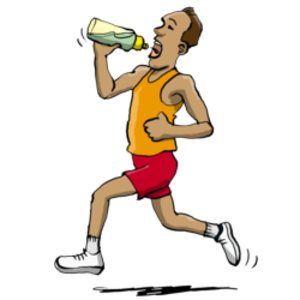Exercise May Be the Best Anti-inflammatory

It is almost twenty years since I was awarded my research doctorate and some of what I said at the time was controversial: I made a lot about the link between inflammation, diabetes mellitus and cardiovascular disease. Now we know more, and the link is a lot less controversial.
A number of studies have suggested that regular exercise reduces inflammation but it is still not clear whether there is a definite link. And if there is a link, how does it work? One candidate that we have discussed before has been a link between the autonomic nervous system – sympathetic and parasympathetic – and inflammation. When we exercise, the sympathetic nervous system increases our heart rate and improves lung function, while the parasympathetic system helps to slow things down as we stop exercising.
A recent study by kinesiology and community health researchers at the University of Illinois provides evidence that may help explain some of the underlying biological mechanisms that take place as the result of regular exercise.
The objective of the research was to examine the independent effect of the “tone” in the parasympathetic nervous system by assessing heart rate recovery after exercise, and whether there was a link between heart rate recovery and circulating levels of C-reactive protein (CRP). CRP, which is mainly produced by the liver, circulates in the bloodstream and is a standard marker for inflammation in the body. We also know that CRP levels tend to rise as we get older, and it may one of the factors involved in the increasing rates of cardiovascular diseases, diabetes and Alzheimer’s disease as we age.
This was a cross-sectional study that focused on baseline test results from 132 sedentary, independently living individuals aged 60 to 83 (47 males; 85 females) who had been recruited to participate in the Immune Function Intervention Trial (ImFIT), a randomized longitudinal trial designed by Woods and funded by the National Institute on Aging to examine the relationship between exercise and immune function.
Participants included only individuals who did not take medications that included corticosteroids, which could interfere with immune measurements. Smokers and/or those with severe arthritis, a history of cancer or inflammatory disease, chronic obstructive pulmonary disorder, uncontrolled diabetes mellitus, congestive heart failure, recent illness or vaccination, or a positive stress test were excluded.
The physical fitness of subjects was assessed through a battery of tests that measured such variables as fatigue, blood pressure, oxygen intake and carbon dioxide elimination and heart-rate recovery in conjunction with exercise on a walking treadmill. Tests also were administered to determine the subjects’ levels of physical activity, physical fitness, emotional stress and body composition, including bone density and body fat. Blood samples also were drawn to measure CRP levels.
The results were published in a recent issue of the Journal of the American Geriatrics Society.
It is important that they measured body fat. We know that increasing the amounts of intra-abdominal fat lead to an increase in inflammation: a fat tummy becomes a factory for inflammatory mediators.
The most interesting findings related to heart rate recovery following exercise.
The speed at which people were able to get back to their resting heart rate after a strenuous exercise test was inversely related to the levels of CRP. That means that individuals who had better parasympathetic tone had lower levels of inflammation.
And as any gym rat will tell you, one of the best-known ways improve parasympathetic tone is with aerobic exercise. When an unfit person exercises it can take a long time for his or her heart rate to come back to normal. As you get back into doing regular exercise, your resting pulse rate falls and so does the time that it takes for your heart rate to recover after exercise.
Since the study was cross-sectional, i.e. the researchers took a snapshot of the participants’ reactions and measurements at a single, fixed point we cannot say anything about cause and effect relationships.
The research confirms the conclusions of previous research that has indicated that high body fat is related to high inflammation and high fitness to low inflammation, though the researchers did not parcel out total body and abdominal fat. But this new research also suggests that physical fitness may be associated with a decrease in inflammation that is independent of body fat, and that it may be mediated by the parasympathetic nervous system: high parasympathetic tone is related to low inflammation.
So the nervous system may be the key player linking fitness, fatness and inflammation.
If this is correct, exercise alone will likely not be the whole answer. We also need to address other factors that modulate the activity of the parasympathetic nervous system including:
- Physical, psychological and social stress
- Adequate good quality sleep
- Diet and nutrition: there may be foods that can increase stress on the autonomic nervous system
- Adequate hydration: dehydration can be a major stressor on the body
- Breathing: shallow breathing and hyperventilation are all known to stimulate the sympathetic nervous system and damp down the calming activities of the parasympathetic nervous system






